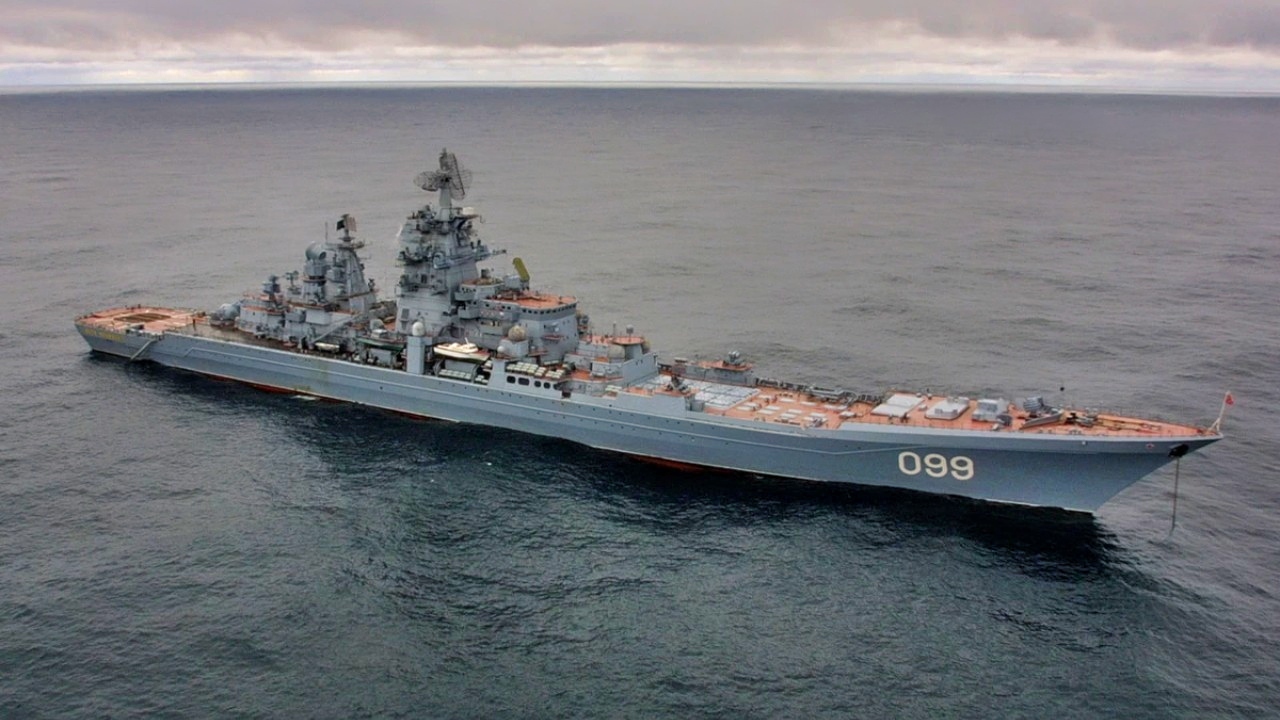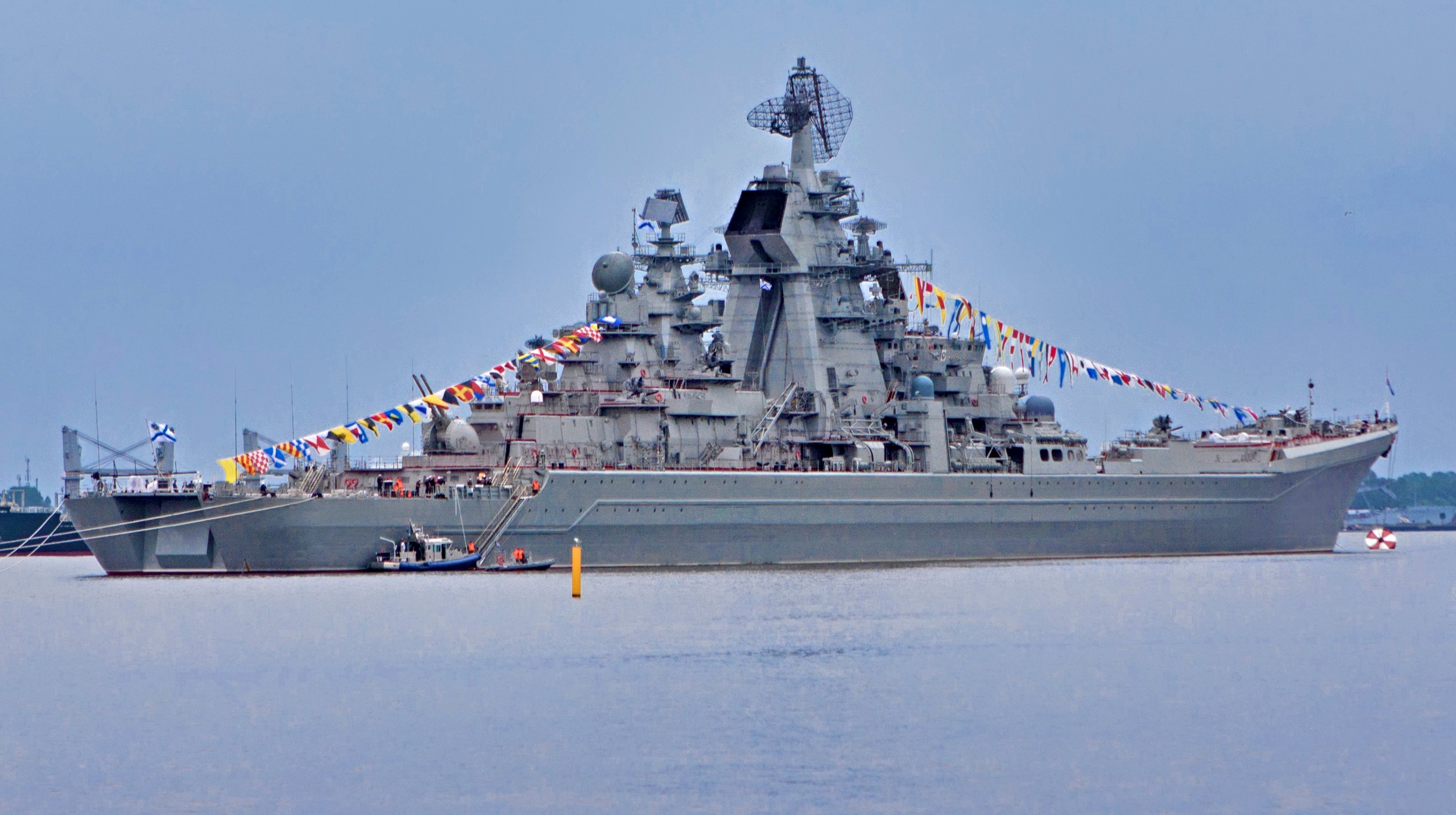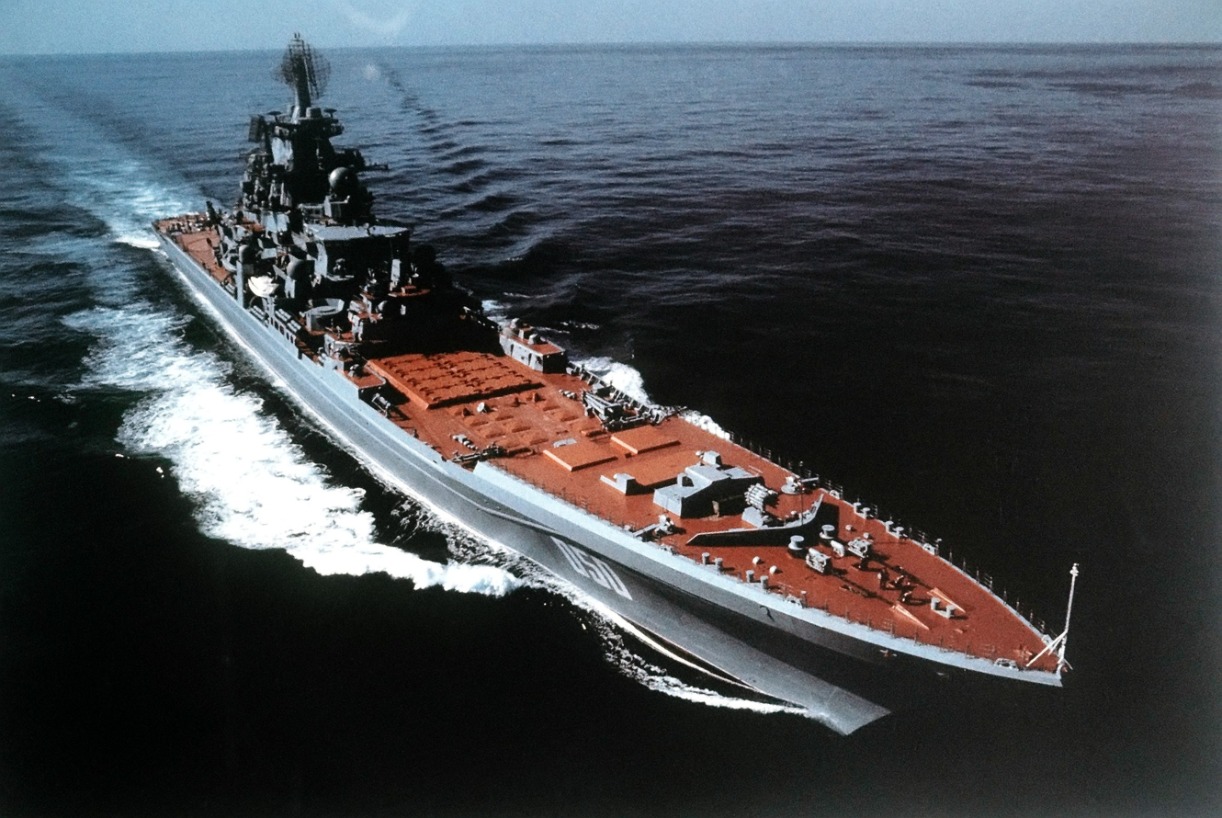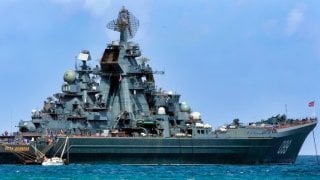Russia's 'Obsolete' Kirov-Class Battlecruisers Needs to Be Scrapped
The Kirov-class battlecruiser, a Soviet-era nuclear-powered warship, was once designed to rival U.S. Navy carriers and assert Soviet naval dominance. With advanced radar systems, heavy armaments, and nuclear propulsion, it represented cutting-edge Cold War technology.
What You Need to Know: The Kirov-class battlecruiser, a Soviet-era nuclear-powered warship, was once designed to rival U.S. Navy carriers and assert Soviet naval dominance. With advanced radar systems, heavy armaments, and nuclear propulsion, it represented cutting-edge Cold War technology.

-However, with the collapse of the Soviet Union, maintenance and upgrades were neglected, leaving only one Kirov-class vessel operational. As modern naval warfare shifts to anti-access/area-denial (A2/AD) strategies, large surface warships like the Kirov have become vulnerable to missile swarms and drones.
-Russia’s decision to decommission these ships reflects their declining utility in today’s rapidly evolving maritime environment.
It’s Time to Retire the Kirov-class Battlecruiser
Project 1144 Orlan is a nuclear-powered battlecruiser designed by the Soviet Union. These boats became designated as the Kirov-class battlecruiser. It was one of the most ambitious naval projects of the Cold War, and it was designed to challenge the supremacy at sea of the U.S. Navy.
The Kirov-class battlecruiser is the largest surface combatant in operation today. They are the apotheosis of the Soviet Union’s naval doctrines – namely to deny the U.S. Navy and the navies of its allies access to key maritime regions near Europe and Russia, and to truly rival the U.S. Navy’s dominant surface warship fleet.

It was conceived in the late 1960s and continued to be designed in the following decade under the oversight of famed Soviet Navy Adm. Sergei Gorshkov. The Red Admiral sought a surface combatant that could go after America’s aircraft carriers and its subs. Initially, the design was meant to simply create a new capital ship capable of withstanding the difficulties of Cold War naval warfare.
The Kirov-class battlecruiser’s design incorporated nuclear propulsion, representing a true evolution for the Soviet Navy away from traditional oil or coal-powered warships.
Onboard Equipment
Toward that end, each Kirov-class battlecruiser was equipped with two nuclear reactors that provided speeds of up to 31 knots (around 35 miles per hour). Despite being so massive, the presence of these twin nuclear reactors meant that the Kirov-class battlecruisers were the fastest surface combatants of their size at the time of their debut.
These massive warships had impressive armament, too. FThey carried 20 P-700 Granit anti-ship missiles. This capacity allowed Kirov-class battlecruisers to engage with enemy carrier groups at considerable distances. In terms of air defense, these boats were equipped with S-300F missile systems, along with various CIWS (Close-In Weapons Systems) like the AK-630.

A Kirov-class vessel possesses advanced radar networks like the “Top Dome” for the S-300F fire control and “Bass Tilt” for CIWS. There are more systems, such as electronic countermeasures to stop incoming missile attacks.
The Kirovs were commissioned in 1980, marking the beginning of a fleet intended to boost the Soviet Navy’s blue-water capabilities, meaning it can operate in the open ocean reliably. (A green-water capability means the navy in question can operate in littoral zones, with limited competency in operating in the surrounding environs. A brown-water navy is limited to rivers and shallower waters.)
When the US Navy Freaked Out
When the Kirov class took to the high seas, the U.S. Navy wigged out. America lacked a massive, fast, heavily armored and armed platform in its surface fleet akin to the Kirov class.
To counter this threat, the Navy reactivated its Iowa-class battleships. Throughout the 1980s, then, the two superpowers began looking back to the age of battleships for inspiration in how to counter each other at sea, rather than looking to the aircraft carriers that had dominated the oceans since 1945.
After the Soviet Union imploded and the Cold War ended, however, the Russian Federation was broke. Maintenance and upgrades of Kirov-class battlecruisers were neglected for years.
Moscow officially abandoned the old Soviet plan for a large fleet of Kirovs. They canceled the fifth boat of that force and eventually decommissioned most of the remaining boats of the class, rather than spend money to maintain and modernize them.
A single Kirov-class battlecruiser remains in service, with another, Pyotr Velikiy, supposedly undergoing retrofit. But Maya Carlin has reported that Russia is considering decommissioning this lone battlecruiser due to costs and the need to reallocate resources toward maintaining the ground and air war in Ukraine.
Russia Can’t Figure Out to Do with the Remaining Kirovs
Moscow has attempted to enhance Admiral Nakhimov by integrating newer missile systems, and potentially the Zircon hypersonic cruise missile. But that would leave but one Kirov remaining in Russia’s service. These reductions in the importance of the Kirov-class battlecruiser should change the minds of military observers who insist that a massive surface fleet is still the key to power projection and argue that we should return to the age of the battleship.

The reason the Russians are mothballing the remaining Kirovs is because in the age of anti-access/area-denial (A2/AD), surface warships of all sizes are especially vulnerable to anti-ship missile swarms and drones. All great powers today must realize that submarines and unmanned undersea vehicles are the only surefire ways to project power across contested maritime environments.
Kirov-class battlecruisers are obsolete and serve little utility other than being A2/AD targets of opportunity. Even if the Kirov-class is equipped with advanced hypersonic weapons capabilities, these boats will be easy targets for anti-ship missile systems that can overwhelm whatever defenses these boats possess against incoming anti-ship missiles.
Author Experience and Expertise: Brandon J. Weichert
Brandon J. Weichert, a National Interest national security analyst, is a former Congressional staffer and geopolitical analyst who is a contributor at The Washington Times, the Asia Times, and The-Pipeline. He is the author of Winning Space: How America Remains a Superpower, Biohacked: China’s Race to Control Life, and The Shadow War: Iran’s Quest for Supremacy. His next book, A Disaster of Our Own Making: How the West Lost Ukraine, is due October 22 from Encounter Books. Weichert can be followed via Twitter @WeTheBrandon.
All images are Creative Commons or Shutterstock.
From the Vault
Russia Freaked Out: Why the U.S. Navy 'Unretired' the Iowa-Class Battleships
Battleship vs. Battlecruiser: Iowa-Class vs. Russia's Kirov-Class (Who Wins?)


